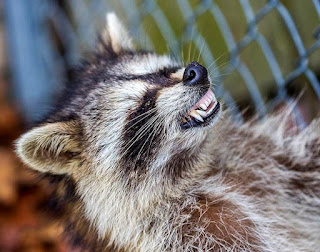These Adorable Small Dogs Are Just the Right Size for Your Family
Restraint Collars. Part I: Elizabethan Collars And Other Types Of Restraint Collars
Sakaguchi, E., Kaizu, K. & Nakamichi, M. Fibre digestion and digesta retention from different physical forms of the feed in the rabbit. Comp. Biochem. Physiol. Comp. Physiol. 102(3), 559–563 (1992).
Gioffre, F., Francia, A. Di, Testasecca, A. & Proto, V. Effect of prolonged inhibition of caecotrophy in the growing rabbit fed on two different diets. [Italian]. Riv. Coniglicoltura 26(4), 27–35 (1989).
Neale, R.J. Coprophagy in iron-deficient rats: II. 2 novel methods of prevention. Lab. Anim. 18(2), 119–124 (1984).
Tulliez, J.E., Durand, E.F. & Bories, G.F. Metabolic fate and pharmacokinetics of tissue residues of the anticoccidial drug robenidine in the rabbit. Incidence of coprophagy on its bioavailability. J. Agric. Food Chem. 30(6), 1071–1075 (1982).
Ferrando, R., Henry, N., Klur, M. & Megard, J.P. Nitrogen and amino acid content of caecotrophes and other faeces in collared rabbits given antibiotics in diet or not. [French]. Ann. Nutr. Alimentat. 26(5), 189–196 (1972).
Demaux, G., Gallouin, F., Guemon, L. & Papantonakis, C. Effects in the rabbit of preventing caecotrophy for a prolonged period. [French]. Reprod. Nutr. Dev. 20(5B), 1651–1659 (1982).
Weingartner, K.E., Franzen, L. & Erdman, J.W. Jr. Effect of coprophagy in rats upon bioavailability of calcium added to casein- and soy flour-based diets. Nutr. Rep. Int. 23(4), 755–761 (1981).
Zhang, D., Hendricks, D.G. & Mahoney, A.W. Effect of coprophagy on bioavailability of iron from plant foods fed to anemic rats. Plant Foods Hum. Nutr. 42(2), 97–108 (1992).
Eckstein, R.A. & Hart, B.L. Grooming and control of fleas in cats. Appl. Anim. Behav. Sci. 68(2), 141–150 (2000).
Farrar, P.L., Opsomer, M.J., Kocen, J.A. & Wagner, J.E. Experimental nasal dermatitis in the Mongolian gerbil: effect of bilateral Harderian gland adenectomy on development of facial lesions. Lab. Anim. Sci. 38(1), 72–76 (1988).
Hernandez, A.D. & Sukhdeo, M.V.K. Host grooming and the transmission strategy of Heligmosomoides polygyrus. J. Parasitol. 81(6), 865–869 (1995).
Astroff, A.B., Young, A.D., Holzum, B., Sangha, G.K. & Thyssen, J.H. Conduct and interpretation of a dermal developmental toxicity study with KBR 3023 (a prospective insect repellent) in the Sprague-Dawley rat and Himalayan rabbit. Teratology 61(3), 222–230 (2000).
Astroff, A.B., Freshwater, K.J., Young, A.D., Stuart, B.P., Sangha, G.K. & Thyssen, J.H. The conduct of a two-generation reproductive toxicity study via dermal exposure in the Sprague-Dawley rat—a case study with KBR 3023 (a prospective insect repellent). Reprod. Toxicol. 13(3), 223–232 (1999).
Gobello, C., de la Sota, R.L. & Goya, R.G. A review of canine pseudocyesis. Reprod. Domest. Anim. 36(6), 283–288 (2001).
Herrenkohl, L.R. & Campbell, C. Mechanical stimulation of mammary gland development in virgin and pregnant rats. Horm. Behav. 7(2), 183–197 (1976).
Reuter, J.D., Ovadia, S., Howell, P. & Jaskwich, D.H. Femoral fracture repair and postoperative management in New Zealand White rabbits. Contemp. Top. Lab. Anim. Sci. 41(4), 49–52 (2002).
Schafer-Nolte, C., Kummerfeld, N. & Ganter, M. Experiences with cylindrical throat collars for cage birds. [German]. Kleintierpraxis 32(3), 133–134, 136 (1987).
Wilson, S. Elizabethan collars and plastic bags. Vet. Rec. 132(26), 664 (1993).





Comments
Post a Comment